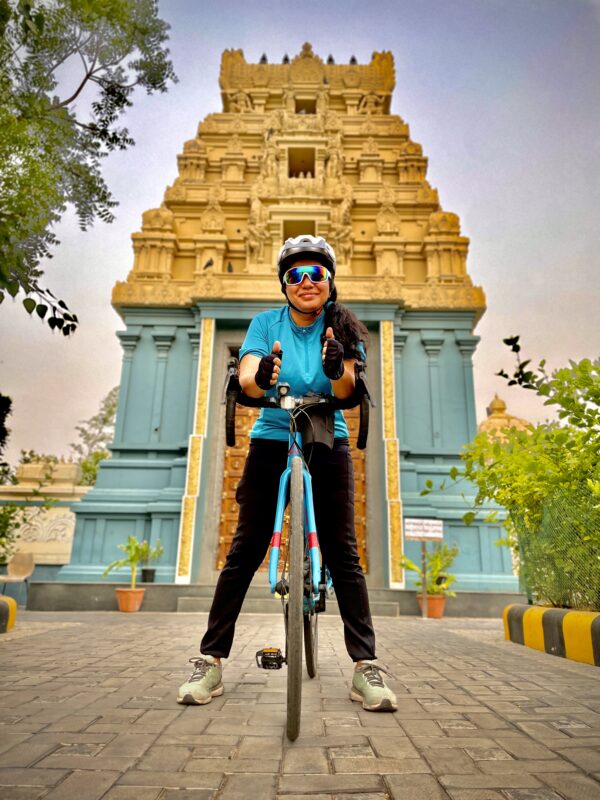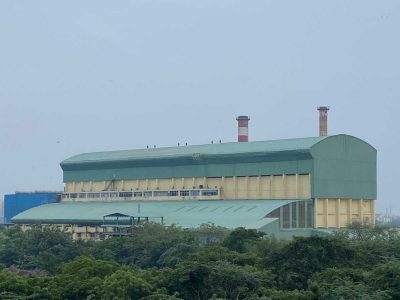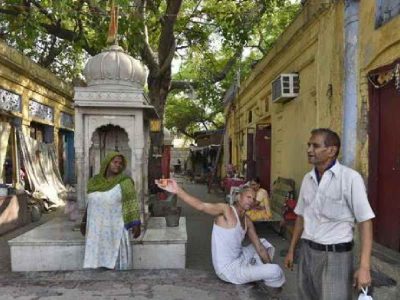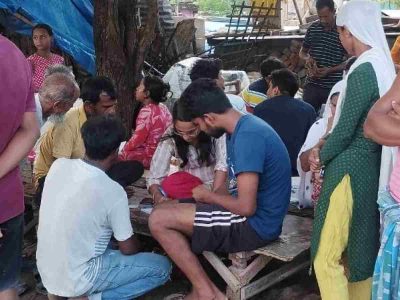Though motorized vehicles dominate the capital’s roads, a sizeable proportion of Delhi’s population rides cycles. However, with the upsurge in the number of cyclists, the number of casualties is also increasing.
According to the Delhi Road Crash Fatalities Report 2020, 4% of cyclists are the victims of crash deaths. In most of these accidents, cars, jeeps, tempos, heavy trucks and motorcycles are at fault.
Mona Maliah, a cyclist in her 70s, who is a member of the South Delhi Cyclist (SDC) group says, “There is no concern for cyclists at all. The problem is that people who are on the road lack traffic sense and awareness. There is no respect for human life or cyclists. I ride at night just to avoid traffic. Even then, I take some people with me in case something goes wrong.”
Although the government talks about cycle tracks coming up, this does not raise much hope as the existing tracks are in no condition to be used. Some of them are blocked with police barricades or are used by locals to set up shops, while others are used by auto-rickshaws and two-wheelers to avoid traffic. Often these lanes are used as service roads.
Geeta Khattar, a member of Raftaar Cycling Club, Gurugram, who started cycling during the pandemic says, “I think the mindset to cycle confidently on roads will only get comfortable when the government will do something; it is so unsafe right now. The reality is that nobody cares, and cyclists are knocked on the roads. Also, there are no cycling lanes. We are on the road most of the time trying to find our path, and we try to be on the left side as much as possible.”

While talking about individual precautions, Khattar says that a cyclist has must ensure that they invest in the right care. Even if it’s expensive, pick up a sturdy model and don’t compromise on gears. The right helmet, gloves and the front ad back lights are very important. These things are going to save cyclists from accidents because no one knows how much time the government will take to make the roads safer.
“I’ve become sensitive to cyclists since I am a cyclist now. The mindset of the people is that cyclists are slow, but it isn’t the case now. We all ride at a decent pace; sometimes, we are at the same pace as that of bikes”, says Ashish Lal, a member of SDC.
He says, “Generally, the drivers will not estimate that these cycles are fast, they think it’s just like the old times but we ride like four times faster than that. To bring that awareness among drivers is necessary.”
This can only be emphasized and brought in if there is empathy towards the rider, said Yashas Pal, member of SDC. He lost his best friend in a road accident. Speaking of the mishap, Pal continued, “Being run over by an army truck with a co-passenger and jawans in the back is one thing, and realizing that nobody was willing to help him is the other.”
Another member of SDC, Punita Nagpal says, “DTC drivers have a major issue, especially with ladies. Whenever they see one of us, they ensure that they keep edging towards the left. Many times, we have to move onto pedestrian lanes. It is hard for them to digest that women can be out in this gear.”
Speaking about the safety of women, Khattar says, “I won’t be comfortable riding alone. I’ve had an experience when a guy started following me, and my team member had to scream at him to back out. As a woman, cycling alone in India is unsafe. I prefer to be in groups unless I have specific objectives.”
Shweta S from Raftaar club, says that her biggest concern is road safety during early morning rides. She normally tries to be a part of large groups to have better visibility and support on the roads. She always shares her live location with her family and one of her friends while riding.
She adds, “I have an auto emergency contact dial set on my Apple watch in case of a sudden jerk. I have a tag on my bike with important details printed on it, such as my emergency contact and blood group.”
“Since our jersey has our name on it, men call out our name on the road. If you are riding with your male friends they have that extra pressure to keep you safe. It’s on their mind to keep you safe. We have to tell them that we are fine and they can carry on”, says Nagpal.
She continues, “When I started riding, I had pepper spray with me. Initially, during the pandemic, there were incidents where phones were being snatched. But when you’re riding, by the time the episode happens, how quickly can you open the spray?”
She says that the rider has to be alert always and there is a common understanding among people that you’ll get hurt while cycling. But it can happen to anyone at any time.
According to her, educating people is important.
“We all talk about special roads, but there is a lot of gap there. It will be better if you educate people, especially on gender equality. There has to be some visible change so that it will be comfortable for women to come out, and that starts with making the place safer”, Nagpal adds.
Another cyclist from SDC said that Delhi as the capital should have cycle lanes where the cyclists are respected as seen in the Chandigarh model.
While talking about awareness, Shweta says, “Multiple boot camps and road shows to teach safety measures to be followed by cyclists should be conducted. Also, educate cyclists to avoid highways and other roads with high-speed vehicular movements.”
She also points out that wearing helmets, reflective jackets/bands and having dipper lights installed on the bikes can improve visibility on the roads.
“The local cycling community can come together and make sure that you’ll be able to support each other and bring up some plans or ideas to the government. Apart from safety, which is the prime concern, it is about the nature and future of upcoming generations.”
For more stories that cover the ongoings of Delhi NCR, follow us on:
Instagram: https://www.instagram.com/thepatriot_in/
Twitter: https://twitter.com/Patriot_Delhi
Facebook: https://www.facebook.com/Thepatriotnewsindia





